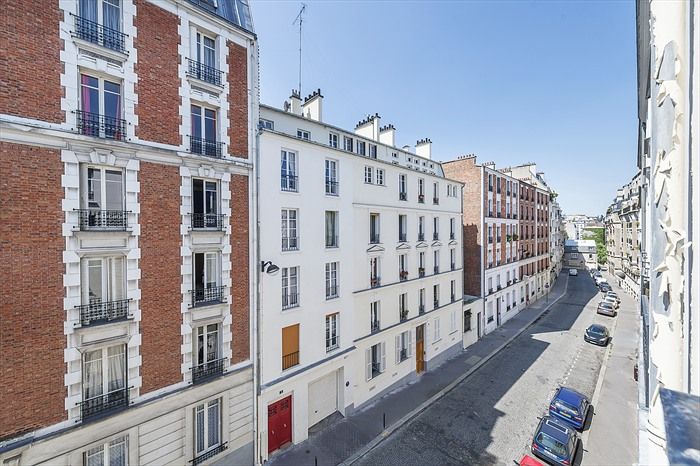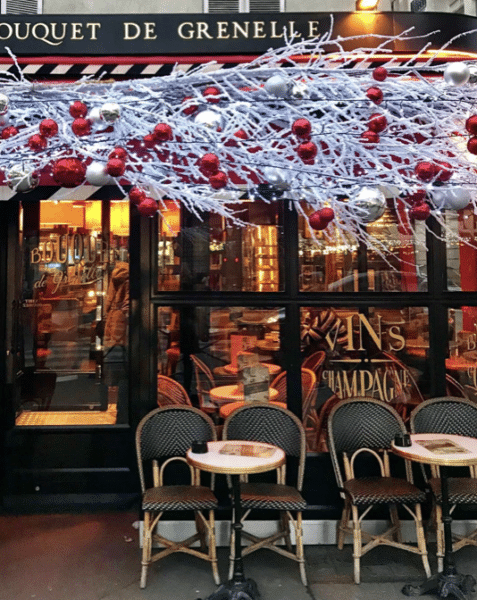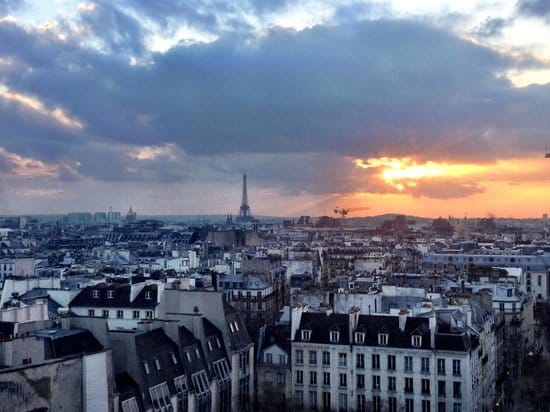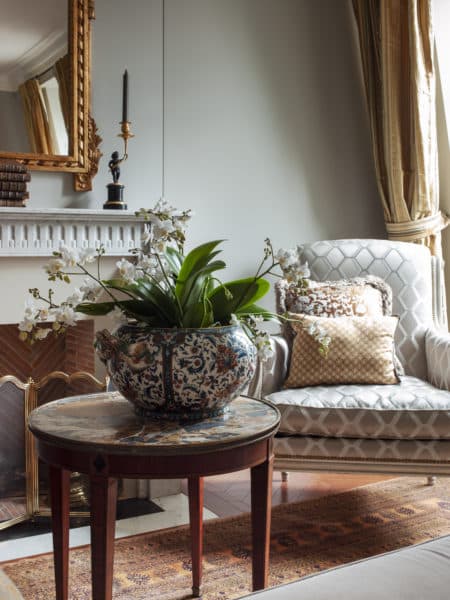Expert Insight, Breaking News, and Insider Stories on Real Estate in Paris

Paris: Beyond the Boulevards
There comes a time in every love affair when you look beyond the charm and the beautiful face and learn whether the real substance is there. With Paris there is always more to learn. Paris is a collection of villages, each with it’s own charm, personality and history. Once you’ve discovered this Paris you’ll never want to go back to the touristy and traffic-clogged boulevards that casual visitors see. Whether you are looking for the right neighborhood to buy a pied-à-terre to call your own, or just somewhere to spend a pleasant afternoon, Paris has a corner to suit almost any discerning taste.

Rue Montmartre: Second Arrondissement
Rue Montmartre, in Paris’ second arrondissement, is the site of some of the cities’ most important historic moments. Named “Hill of the Martyr” in remembrance of Saint Denis who was martyred there in the 5th century, it was created by Louis VI in about 1137 when he created the renowned food market at Les Halles. The street served as a major axis into the heart of Paris when the border of the city used to run along the top of the second arrondissement.
Fast forward to World War I, when the influential newspaper of the period, l’Aurore, was published on the street, and the nearby Café du Croissant where politician Jean Jaurès was assassinated for opposing the war. A marble plaque engraved with his name marks the place, and the table where it is said he spoke his last words is still preserved inside the café for history buffs to admire.
 Architecturally speaking, rue Montmartre is a mix of medieval buildings, the lasting remnants from the earliest days of Paris, and art deco buildings from the 1930s. Real estate in this quartier of Paris doesn’t come cheaply, but it does come with a sense that you are buying a piece of history. Some of the more sought-after streets are the nearby rue d’Aboukir, where you’ll find cozy cafés and charming vintage shops, and the rue d’Argout, originally a thoroughfare for merchants in the 13th century.
Architecturally speaking, rue Montmartre is a mix of medieval buildings, the lasting remnants from the earliest days of Paris, and art deco buildings from the 1930s. Real estate in this quartier of Paris doesn’t come cheaply, but it does come with a sense that you are buying a piece of history. Some of the more sought-after streets are the nearby rue d’Aboukir, where you’ll find cozy cafés and charming vintage shops, and the rue d’Argout, originally a thoroughfare for merchants in the 13th century.
 Rue Montmartre isn’t far from the pedestrian market street rue Montorgueil, the last remnant from the vast food market that was Les Halles. The nearby rue du Nil was Paris’ “Alley of Miracles,” a name it earned for the tales of vagrants and prostitutes who hide there at night, somehow cured of the ailments that plagued them during the day. Today, rue du Nil is home to one of Paris’ most talked about restaurants, Frenchie, and its sister wine bar across the street. Be sure to visit; you will not be disappointed.
Rue Montmartre isn’t far from the pedestrian market street rue Montorgueil, the last remnant from the vast food market that was Les Halles. The nearby rue du Nil was Paris’ “Alley of Miracles,” a name it earned for the tales of vagrants and prostitutes who hide there at night, somehow cured of the ailments that plagued them during the day. Today, rue du Nil is home to one of Paris’ most talked about restaurants, Frenchie, and its sister wine bar across the street. Be sure to visit; you will not be disappointed.
 Running from the border of the 1st arrondissement to the top of the 2nd, rue Montmartre is dotted with cafés (like our favorite Café Noir) and specialty shops old and new, with Mora selling pastry and baking equipment for nearly 200 years and the newest Paris COS boutique. Just north of rue Etienne Marcel the street is only open to pedestrians making its cobblestones and tree-lined sidewalks ideal for strolling and lèche-vitrine (window shopping), popping into a café, and admiring the romantic surroundings.
Running from the border of the 1st arrondissement to the top of the 2nd, rue Montmartre is dotted with cafés (like our favorite Café Noir) and specialty shops old and new, with Mora selling pastry and baking equipment for nearly 200 years and the newest Paris COS boutique. Just north of rue Etienne Marcel the street is only open to pedestrians making its cobblestones and tree-lined sidewalks ideal for strolling and lèche-vitrine (window shopping), popping into a café, and admiring the romantic surroundings.
 Rue des Martyrs: Ninth and Eighteenth Arrondissements
Rue des Martyrs: Ninth and Eighteenth Arrondissements
Heading north from rue Montmartre, it’s easy to figure out the other street honoring Saint Denis. Rue des Martyrs, spanning the 9th and 18th arrondissements is also named for the fifth century saint beheaded for preaching the Christian Gospel. According to legend, Saint Denis miraculously picked up his severed head and walked for miles before succumbing to his death. During the Renaissance, the site of his beheading on what is now the Rue Yvonne Le Tac became an important place of pilgrimage.
The rue des Martyrs starts at the beautiful Notre-Dame-de-Lorette church, at the base of the hill, and ends near the Place des Abbesses to the north. The busy mercantile street, boulevard de Rochechouart, divides the street in two at the Pigalle metro stop, and serves as the border between the 9th and the 18th arrondissements. Both the North and South ends of the street are teeming with bobo, or bourgeois bohemian culture.
The lower part of the street is architecturally more upscale, and has become a popular spot for hipsters and young property buyers. The most beautiful buildings in the neighborhood are around the Saint Georges metro stop, and further north near avenue Trudaine. Tree-lined streets with markers that identify historically significant sites are common here.
 The middle of the rue des Martyrs, around rue Victor Massé, is known as South Pigalle. It’s the artists, filmmakers, writers and epicureans who have established this area as the place to be, holding court on the terraces of the busy café Le Mansart, or perusing the new “slow food” market Causses. Rue des Martyrs is teeming with shops and restaurants. On Sundays that part of the street is limited to walkers, bicycles and baby strollers, and bustling with activity from specialty food and flower shops, boutiques and restaurants.
The middle of the rue des Martyrs, around rue Victor Massé, is known as South Pigalle. It’s the artists, filmmakers, writers and epicureans who have established this area as the place to be, holding court on the terraces of the busy café Le Mansart, or perusing the new “slow food” market Causses. Rue des Martyrs is teeming with shops and restaurants. On Sundays that part of the street is limited to walkers, bicycles and baby strollers, and bustling with activity from specialty food and flower shops, boutiques and restaurants.
Rue des Martyrs is full of delightful detours, iron gates that lead into the private courtyards that are oases from the sprawling expanse of Paris. One in particular is the Cité Malsherbes, distinguished by its terracotta tile with the address No. 11, where the 19th-century painter Jules Jollivet lived. The uppermost part of the street, with its cabarets, clubs and proximity to the persistently seedy Pigalle, retains a distinctly bohemian atmosphere.
 Like any good Paris neighborhoods, some of the street’s best shops, like the popular butcher, Boucherie Billebault, have been operated by the same families for more than a century. Shoppers indulge at the boulangerie Arnaud Delmontel, one of the most acclaimed in Paris, and Rose Bakery, an English-owned organic teashop and épicerie. Residents on and around rue des Martyrs enjoy a cordial intimacy with local merchants and neighbors, a quality that makes Paris such a special place to live.
Like any good Paris neighborhoods, some of the street’s best shops, like the popular butcher, Boucherie Billebault, have been operated by the same families for more than a century. Shoppers indulge at the boulangerie Arnaud Delmontel, one of the most acclaimed in Paris, and Rose Bakery, an English-owned organic teashop and épicerie. Residents on and around rue des Martyrs enjoy a cordial intimacy with local merchants and neighbors, a quality that makes Paris such a special place to live.
 Rue du Cherche-Midi Sixth Arronidissement
Rue du Cherche-Midi Sixth Arronidissement
With its literary history, tangle of tiny café-lined streets and elegant shopping, Paris’ 6th arrondissement tops the list of sought after places to live in Paris. It’s easy to stay happily occupied there for some time, but venturing off the beaten path a bit can yield some lovely discoveries as well.
Property in the 6th arrondissement is some of the most desirable in Paris – and the prices reflect that. But the neighborhood earns its value: not just a shopping Mecca, it is also home to several prestigious museums, expansive and secret gardens, close to the Seine river, and a stone’s throw from important embassies and French ministries. It is an appealing choice for diplomats, art lovers, foodies, Francophones, Francophiles, and fashionistas alike.
 The rue du Cherche-Midi in the heart of the 6th was home to two institutions of historical significance. The Convent of the Daughters of the Good Shepherd was demolished on Rue du Cherche-Midi in 1847, and a prison built on the site housed military and political prisoners during the two World Wars. The dilapidated prison was finally razed in 1966; in its place, the world-renowned Graduate School for Social Sciences was opened two years later.
The rue du Cherche-Midi in the heart of the 6th was home to two institutions of historical significance. The Convent of the Daughters of the Good Shepherd was demolished on Rue du Cherche-Midi in 1847, and a prison built on the site housed military and political prisoners during the two World Wars. The dilapidated prison was finally razed in 1966; in its place, the world-renowned Graduate School for Social Sciences was opened two years later.
Today rue du Cherche-Midi is a quiet and narrow street running from the Carrefour Croix Rouge all the way to the 15th arrondissement, passing by Paris’ beloved Le Bon Marché. This luxury department store boasts an impressive line-up of designer goods, a gorgeous Art Deco exterior, and an elegant and international gourmet grocery store. Stop here to pick up the makings for an elaborate dinner, an epicurean picnic, or just to admire the offerings. Located just near Le Bon Marché is a stunning interior décor shop, Mis en Demeure, where you can find unique and fine quality linens.
 At number 92 on the street you’ll find the charming Hôtel La Belle Juliette, where inside you can make a reservation for a luxurious, fireside manicure. The northern end of the rue du Cherche-Midi is ultimate Parisian style. Cars are permitted at the Carrefour Croix Rouge, but there is minimal traffic, which makes it great for strolling and window-shopping. A short walk into the street to the famous Poilane bread shop, where you can even purchase a loaf inscribed with your name. Boutiques abound, from the upstart
At number 92 on the street you’ll find the charming Hôtel La Belle Juliette, where inside you can make a reservation for a luxurious, fireside manicure. The northern end of the rue du Cherche-Midi is ultimate Parisian style. Cars are permitted at the Carrefour Croix Rouge, but there is minimal traffic, which makes it great for strolling and window-shopping. A short walk into the street to the famous Poilane bread shop, where you can even purchase a loaf inscribed with your name. Boutiques abound, from the upstart

Heimstone to the French classic, Marithé et François Girbaud. Just down the street is the popular and celebrity-chef favorite Le Cherche Midi, an intimate Italian restaurant – intimate meaning always packed.
Continue south-west on rue du Cherche-Midi toward boulevard du Montparnasse for some historic sightseeing. Look up as you pass the door at number 37, home to the first telephone exchange in Paris: peer up at the sculptured female face above the entrance to see the headphone on her right ear and, above her head, the words J’ecoute; I listen.

These streets are just three of the countless gems to discover as Paris becomes more familiar to you, with each visit. Paris offers wonderful surprises around nearly every corner, redefining her beauty with age. The love affair continues.
Contact Paris Property Group to learn more about buying or selling property in Paris.













